Hello, friends, Happy Christmas!
It’s time again for the Christmas Quiz based on my blogs from 2020. I trust you are all OK in these difficult times and send you my very best wishes for 2021. I am sure that, like me, you hope that it will bring happier times for everyone than the year gone by.
- This magnificent statue of the Duke of Wellington stands outside the Royal Exchange. What is it made from?
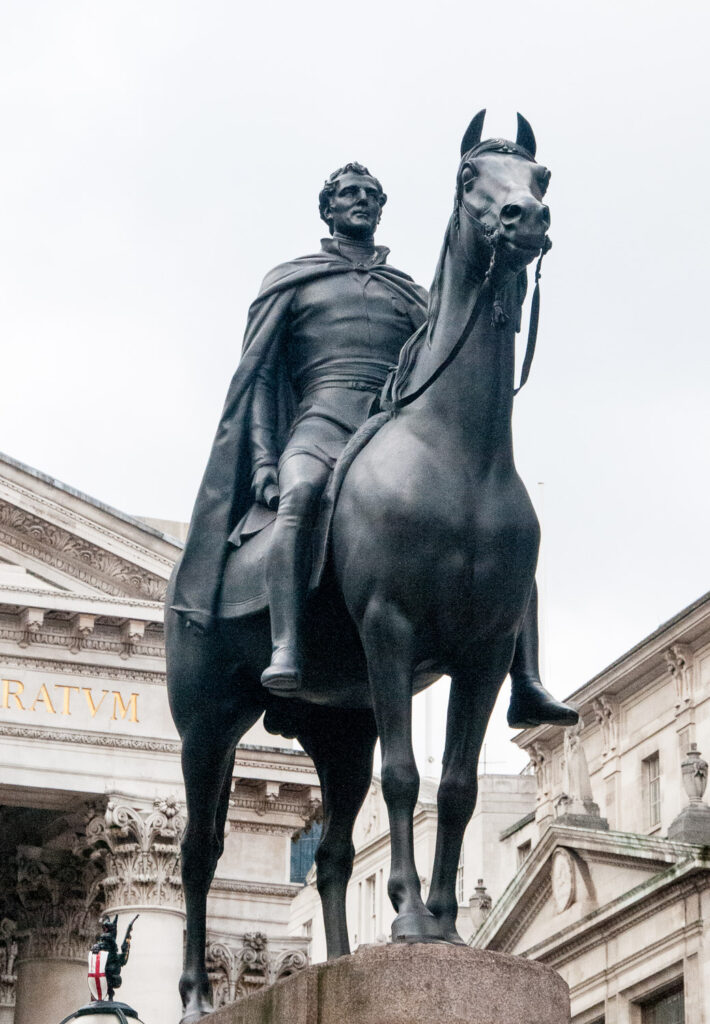
2. This beautiful clock is sited alongside the church of St Magnus the Martyr and dates from a time when the church was clearly visible from the ‘old’ London Bridge. It was the gift of a Lord Mayor, Sir Charles Duncombe. What’s the story behind his generosity?
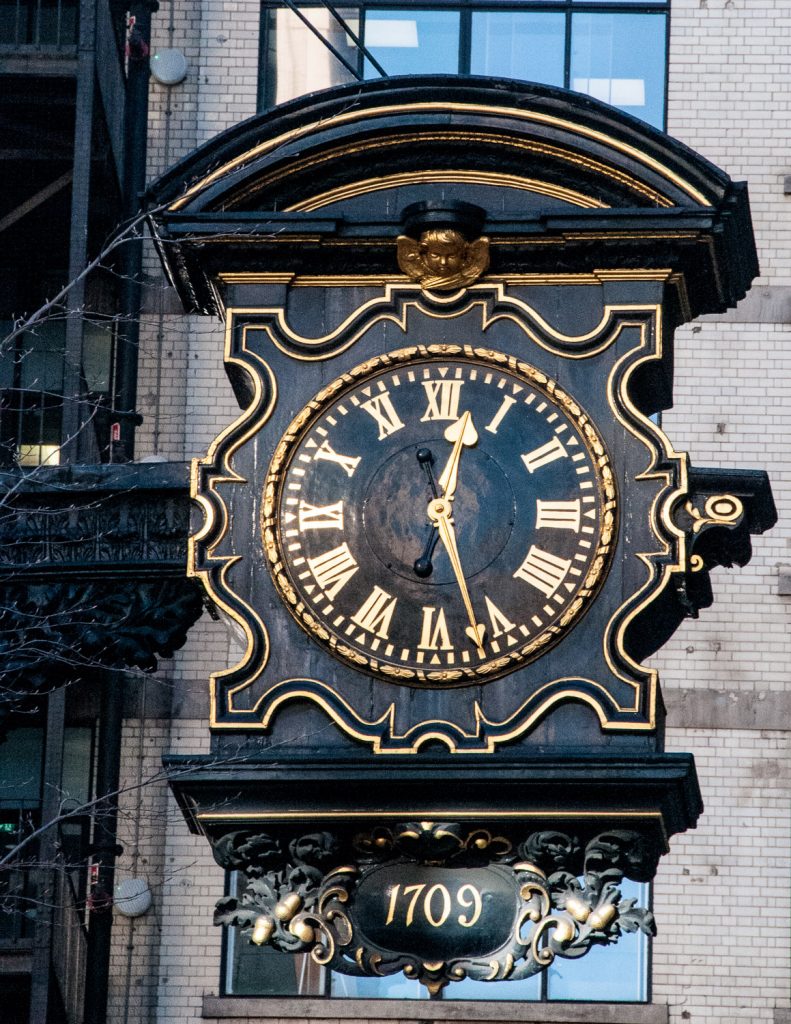
3. This extraordinary sculpture of St Bartholomew is, appropriately, on display in the church of St Bartholomew the Great in Smithfield. Entitled Exquisite Pain, as well as his skin the saint also holds a scalpel in one hand and a pair of scissors in the other. Who was the sculptor?
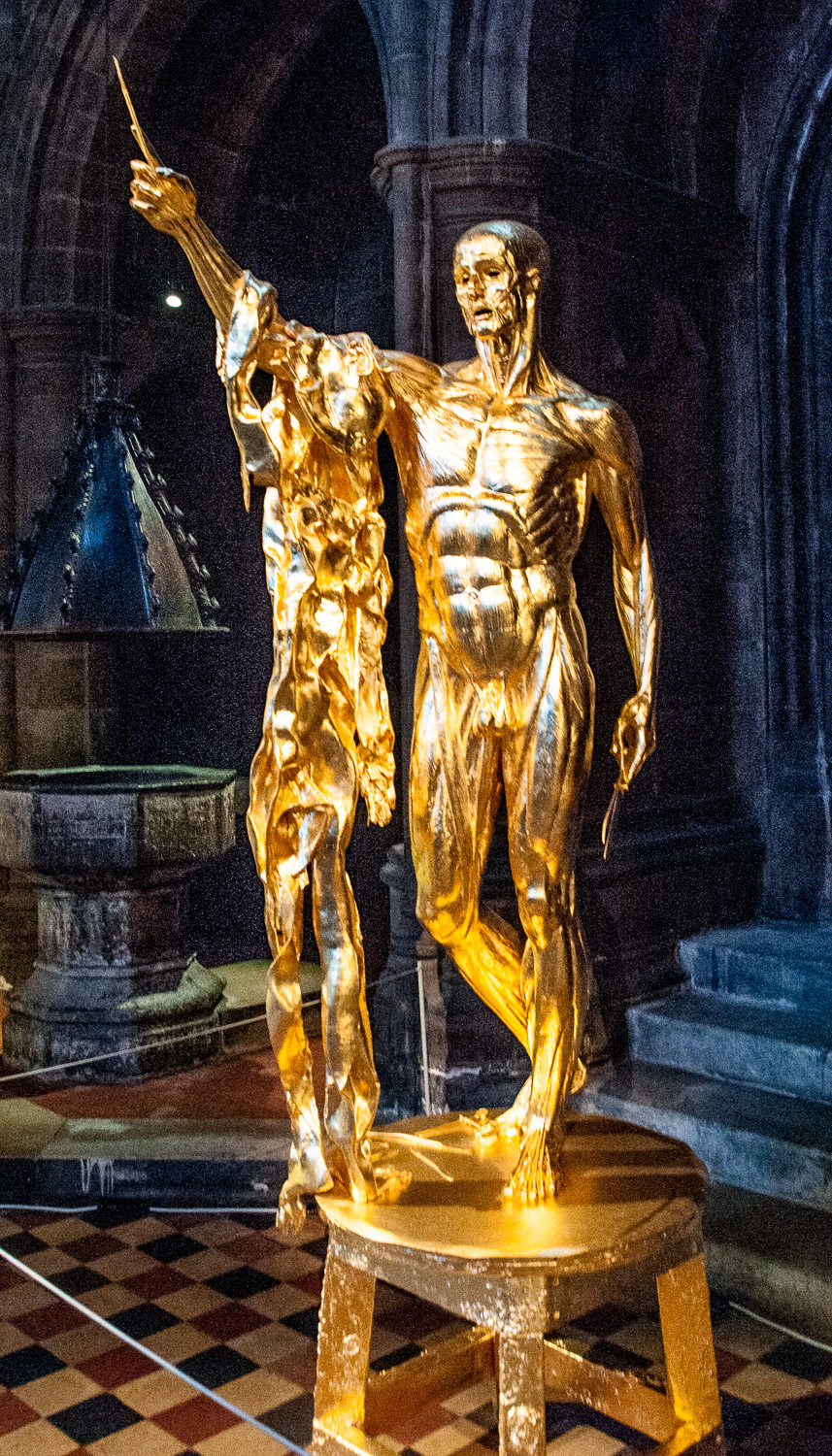
4. The Auroch is a beast that’s been extinct for nearly 400 years. This particular skull dates from the Neolithic period (4,000 -2,200 BC) and was discovered in Ilford, East London, where herds of this creature once roamed.
Where must you go to see it?

5. This brave policeman sacrificed his life saving warehouse workers from a First World War bombing raid. Where can you find this memorial to him?
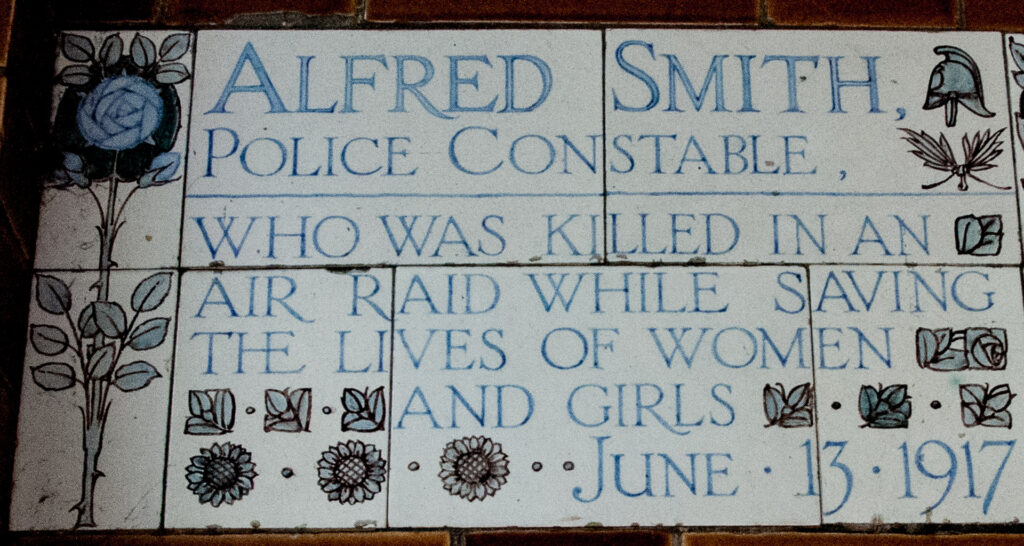
6. In what way is this church in Eldon Street unique? It’s called St Mary Moorfields.
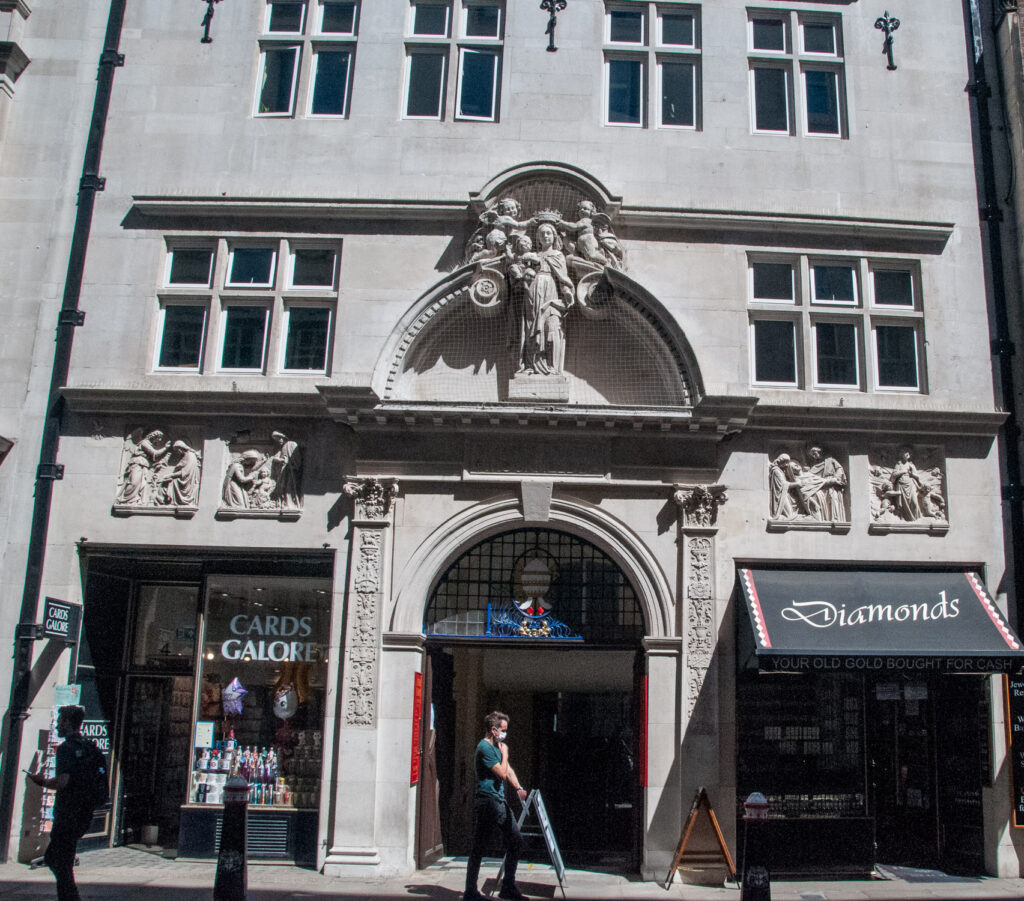
7. If you visit St Sepulchre-without-Newgate you can admire this font cover with its beautiful craftmanship. Made of oak, it was created about 1690 and is typical of many such covers made for City churches after the Great Fire of 1666. Until 1940 it belonged in Christchurch Newgate Street, so how did it come to reside in St Sepulchre’s?

8. Look at this extraordinary statue at 193 Fleet Street now, sadly, somewhat weathered. Is it a man dressed as a woman or a woman dressed as a man?
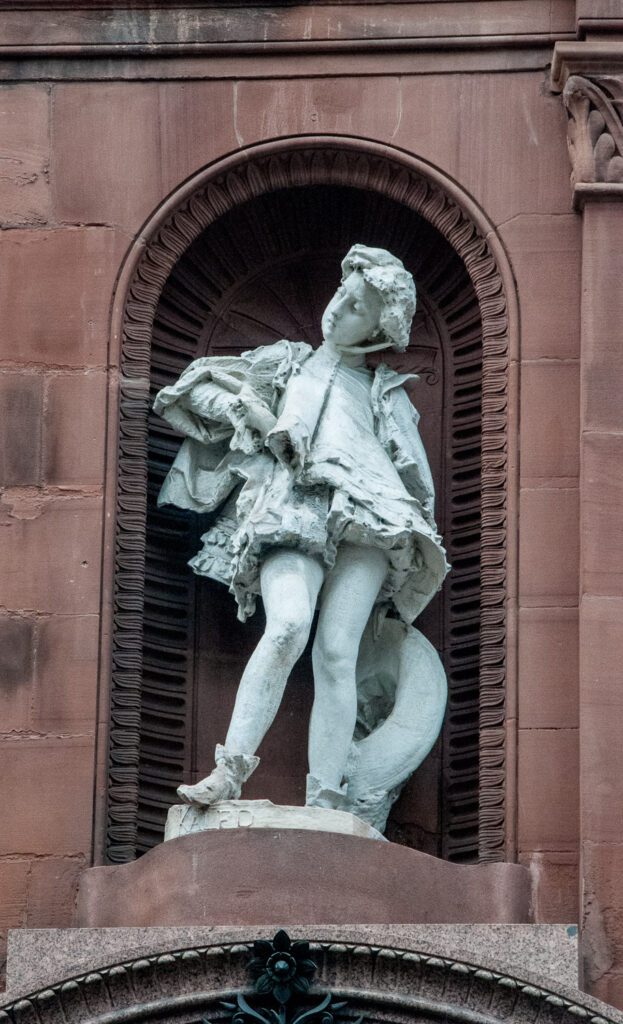
9. This cross-section shows the layers of paint from a lamp standard on a famous City landmark. What landmark is it?
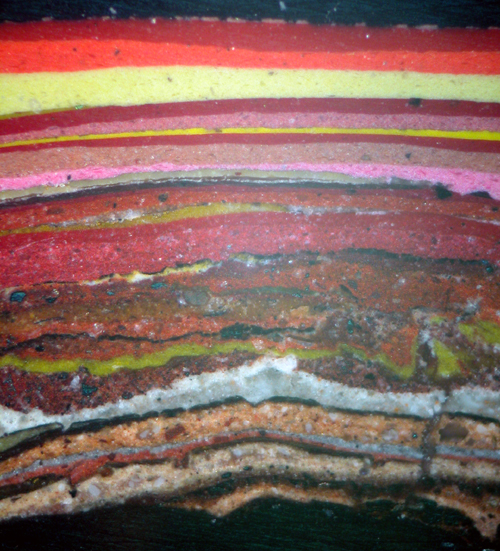
10. These figures, called Atlantes, support a balcony overlooking Farringdon Street. Do they date from 1814, 1914 or 2014?
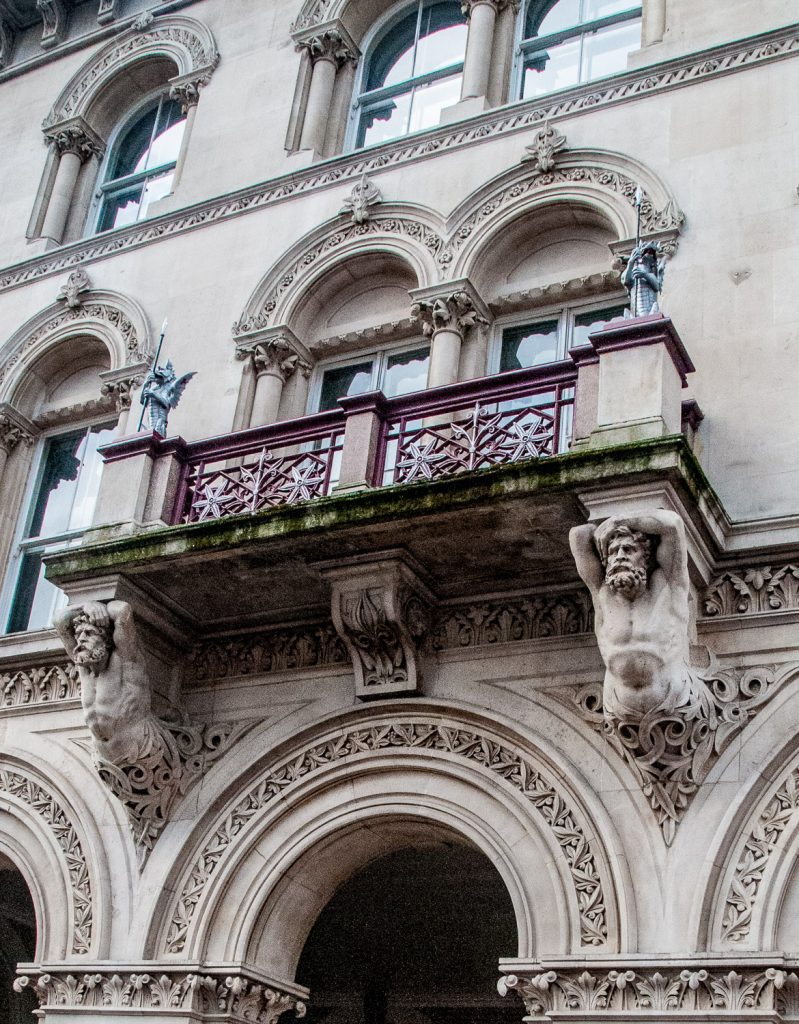
11. This is known as The Dean’s Door and the carver was stonemason and architect Christopher Kempster (1627-1715), one of Wren’s favourite craftsmen. His work on the cherubs’ heads and foliage was considered so good Wren awarded him an extra £20 for ‘the extraordinary diligence and care used in the said carving and his good performance of the same’. Where is The Dean’s Door?
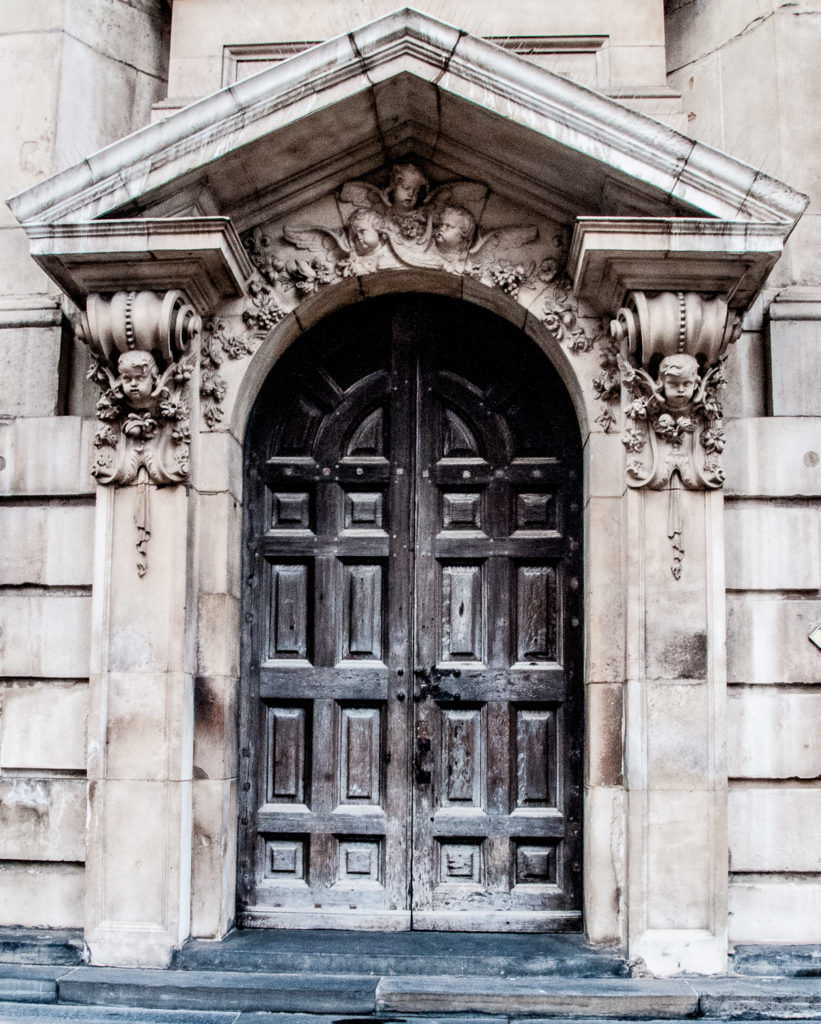
12. This churchyard survives from the 17th century, its banked-up top surface a reminder that it is still bloated with the bodies of victims of the Great Plague of 1665. Three hundred and sixty five were buried there including Mary Ramsay, who was widely blamed for bringing the disease to London. What is the name of the church and what famous civil servant and diarist lived nearby and frequently worshipped there?

13. At the church of St Martin within Ludgate on Ludgate Hill rests this very unusual font. The bowl is white marble and the wooden supporting plinth is painted to look like stone. It dates from 1673, predating the church, and was previously located in a ‘tabernacle’ used by the congregation during the rebuilding. The inscription on it reads Niyon anomhma mh monan oyin (which translates as ‘Cleanse my sin and not my face only’). There is something unusual about the Greek wording – can you tell what it is?
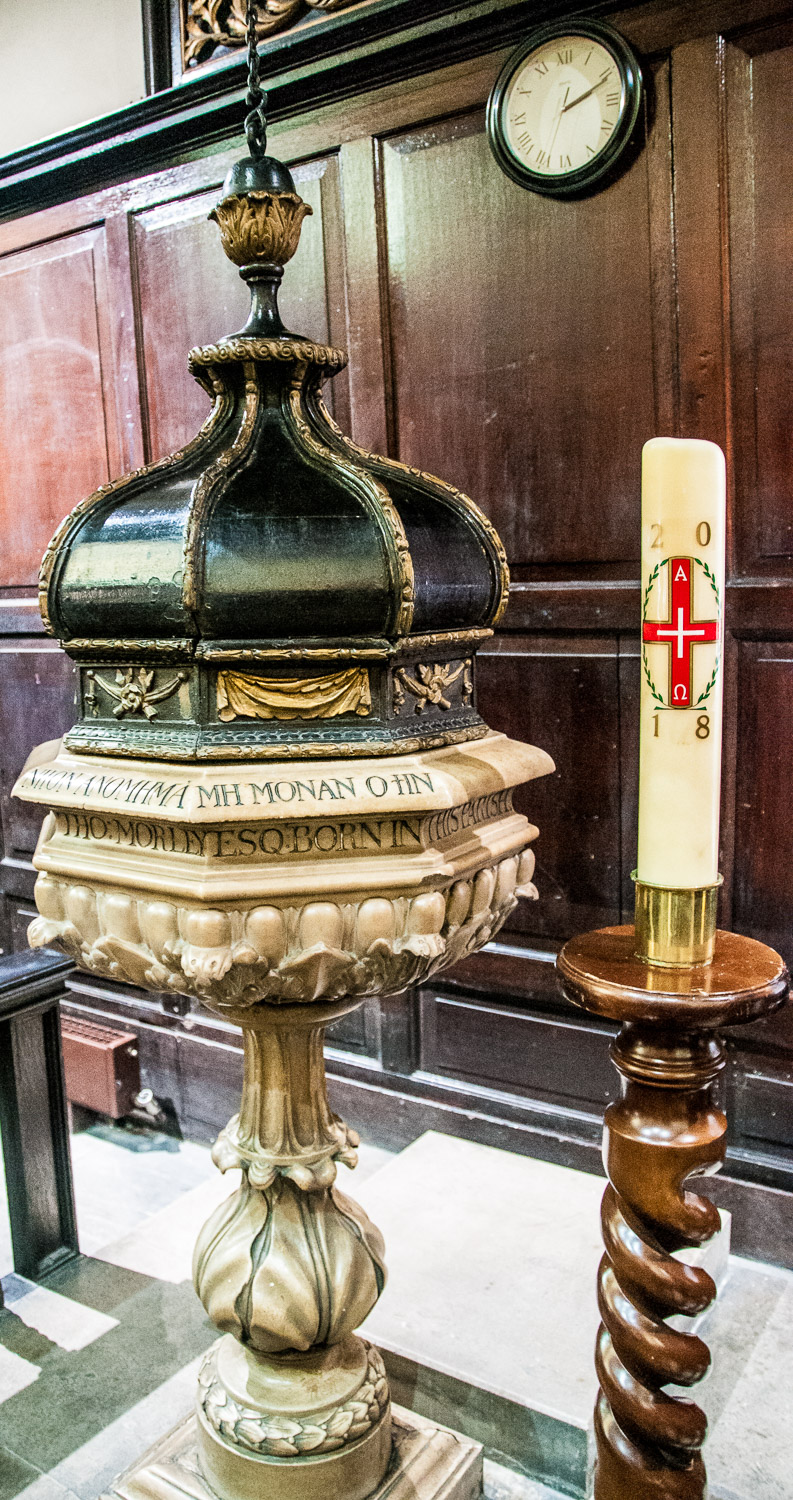
14. In St Bartholomew the Less, high up on the south wall, is the memorial to Robert Balthrope, Sergeant Surgeon to Queen Elizabeth I …
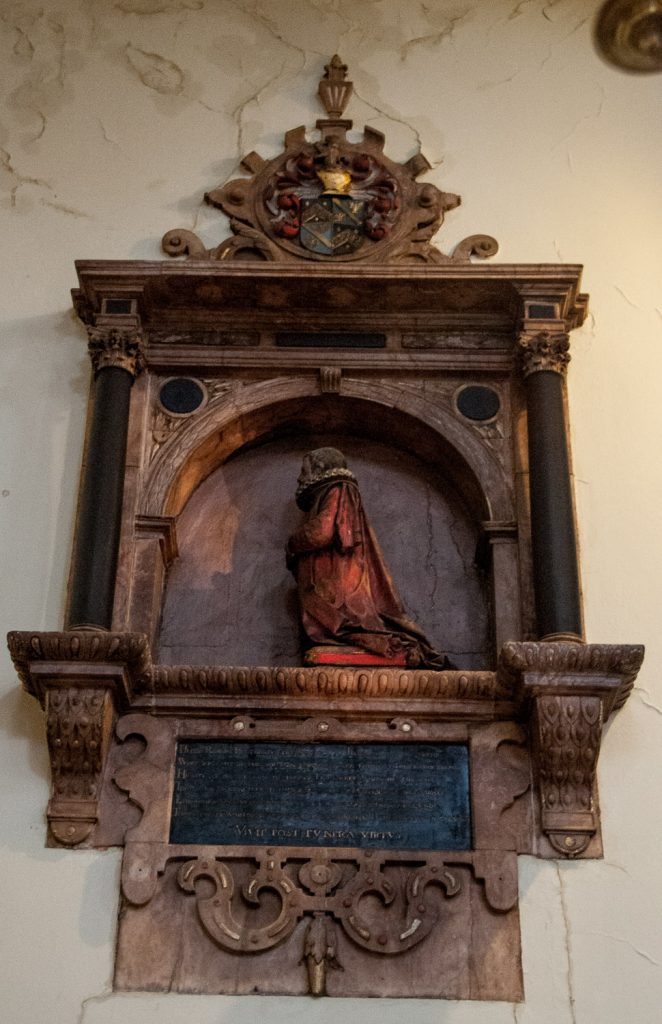
The inscription reads …
Here Robert Balthrope Lyes intombed,
to Elizabeth Our Queene
Who Sergeant of the Surgeons Sworne,
Neere Thirtye Yeeres Hathe Beene
He Died at Sixtye Nine of Yeeres,
Decembers Ninthe The Daye
The Yeere of Grace Eight Hundred Twice
Deductinge Nine A waye.
Let Here His Rotten Bones Repose
Till Angells Trompet Sounde
To Warne The Worlde of Present Chaunge
And Raise the Deade From Grounde.
Can you do the maths and calculate the year he died?
15. What famous cat is this and who lived for a time in the house he is staring at?
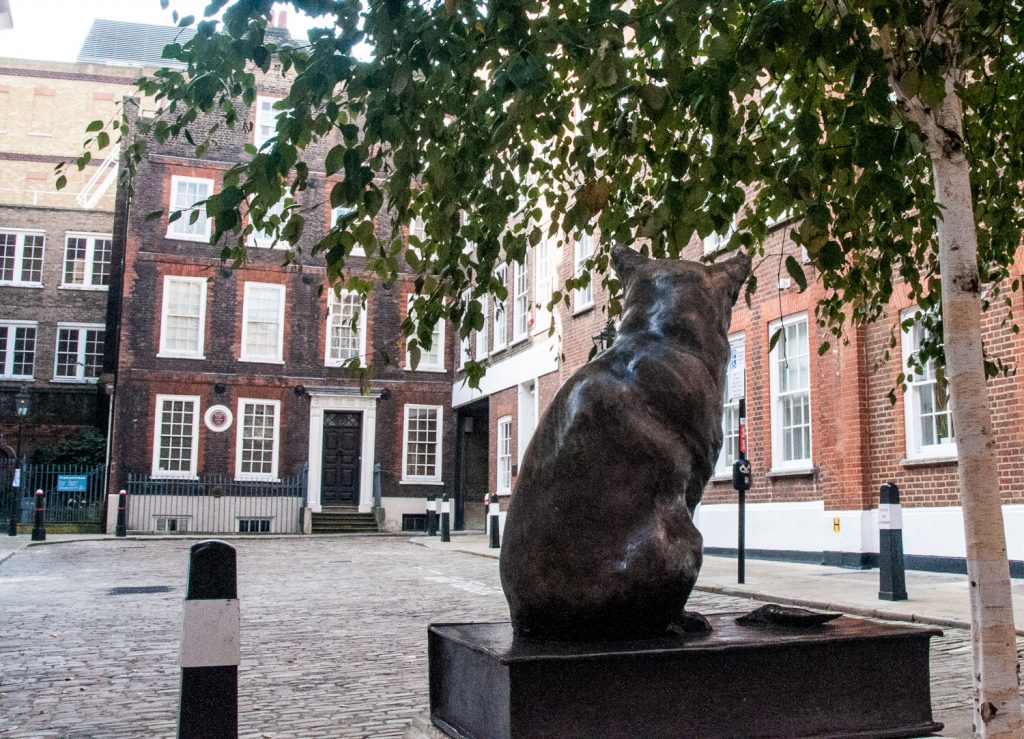
16. Here a lady, her head bowed, strains hard to control a gigantic horse (and there is a similar male figure at the other end of the building). The sculpture, called Controlled Energy, dates from 1932 and the sculptor, William Reid Dick, was asked why he included female figures in the work.
This was the sculptor’s interesting reply: ‘These days women are controlling affairs nearly, if not quite, as much as men. They begin to take control in some respects … as soon as they are out of their cradles, and the idea would have been incompletely carried out if only men had been used’.
What building was he working on?
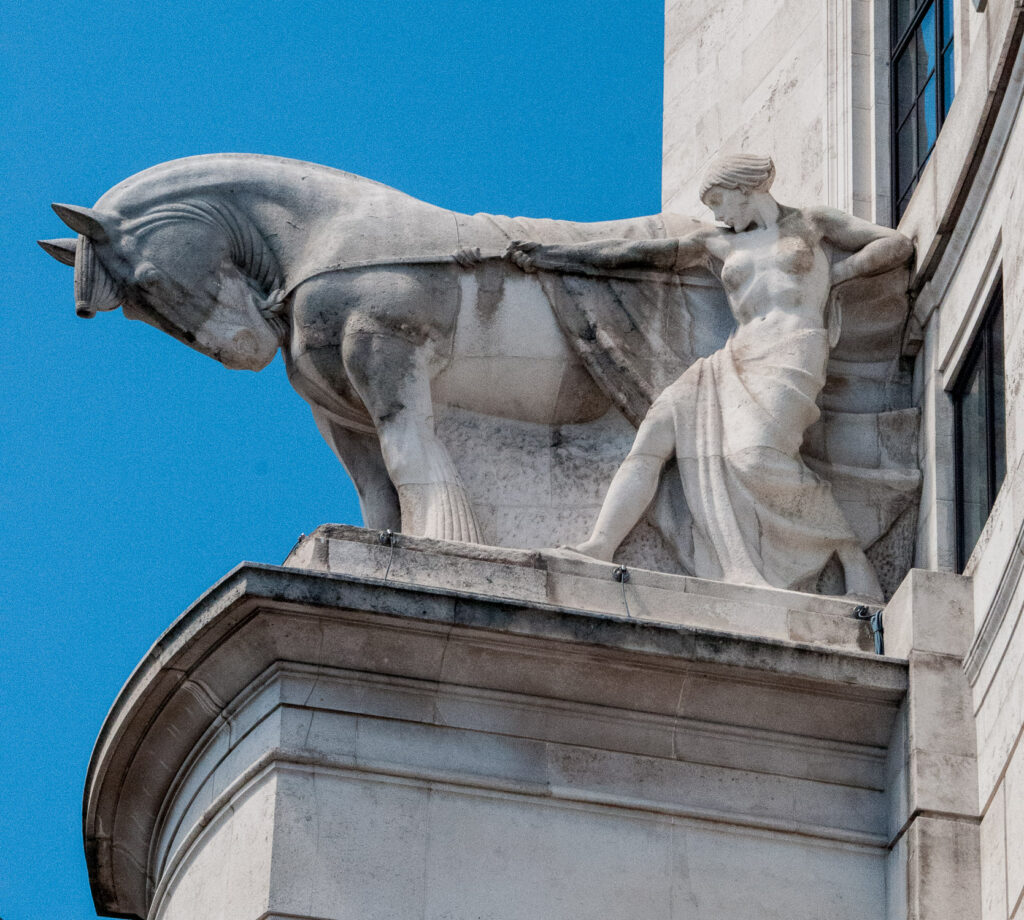
17. What notorious prison is this? Now demolished, where it once stood is now the site of the Central Criminal Court or Old Bailey.
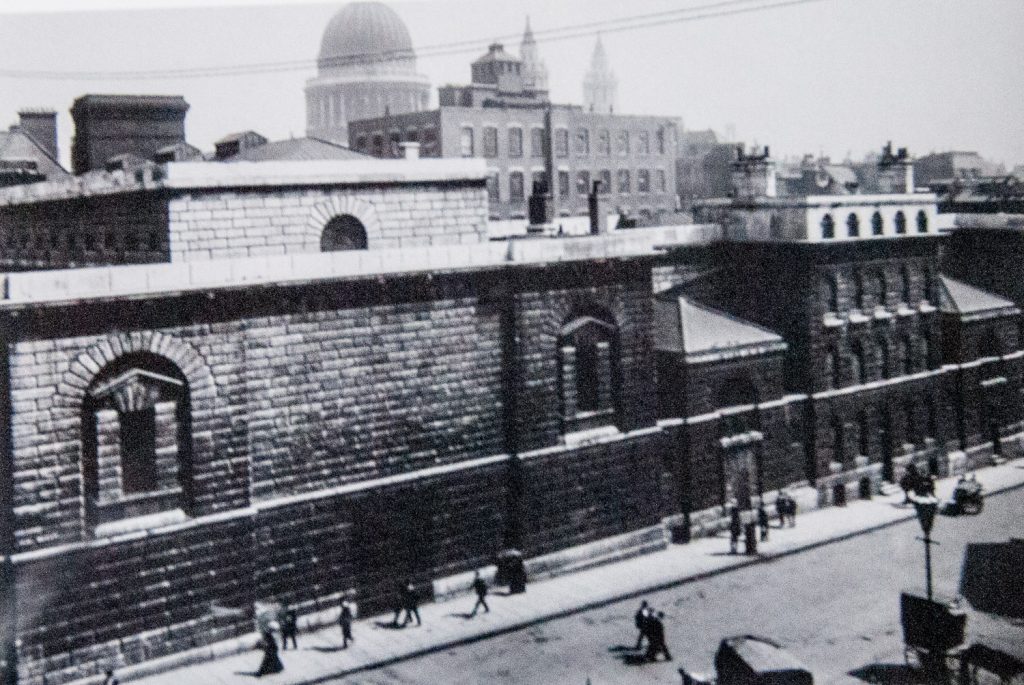
18. What children are represented in this sculpture outside Liverpool Street Station?
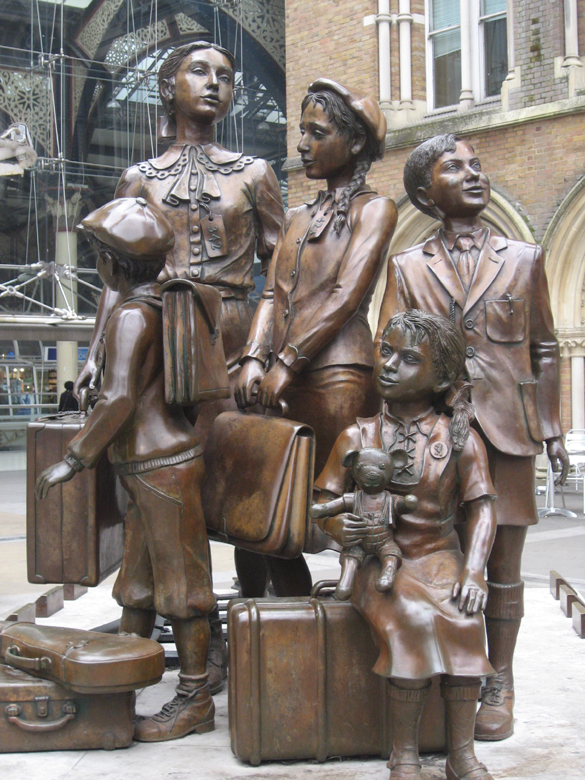
19. A friar carrying his missal stands in an alcove in an area named after an order of monks that were finally expelled in 1538 as a result of the dissolution of the monasteries. What is the area called?
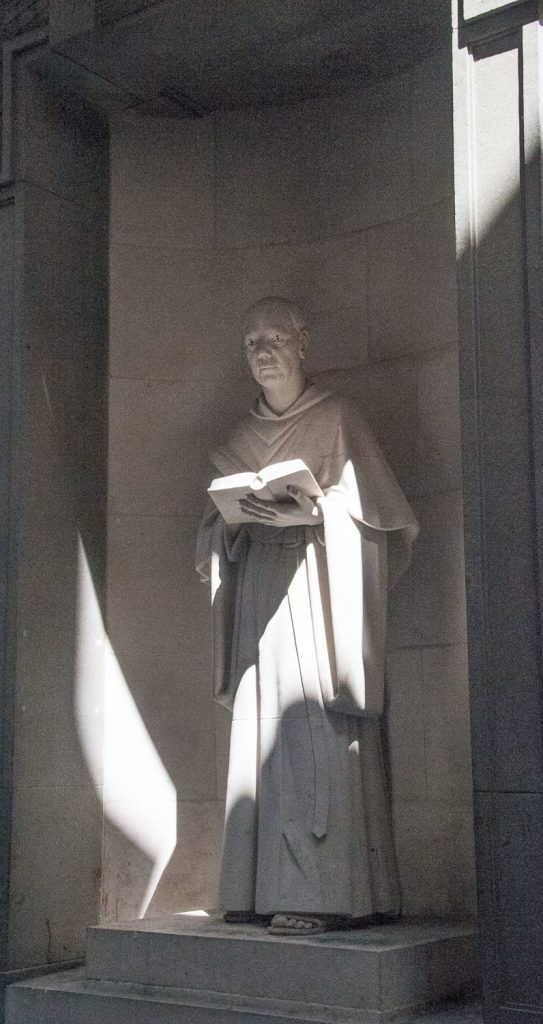
20. Tucked away in a corner at Liverpool Street railway station is this plaque directly underneath the main memorial to the First World War dead. Within two hours of unveiling the memorial Sir Henry Wilson was dead. What happened to him?
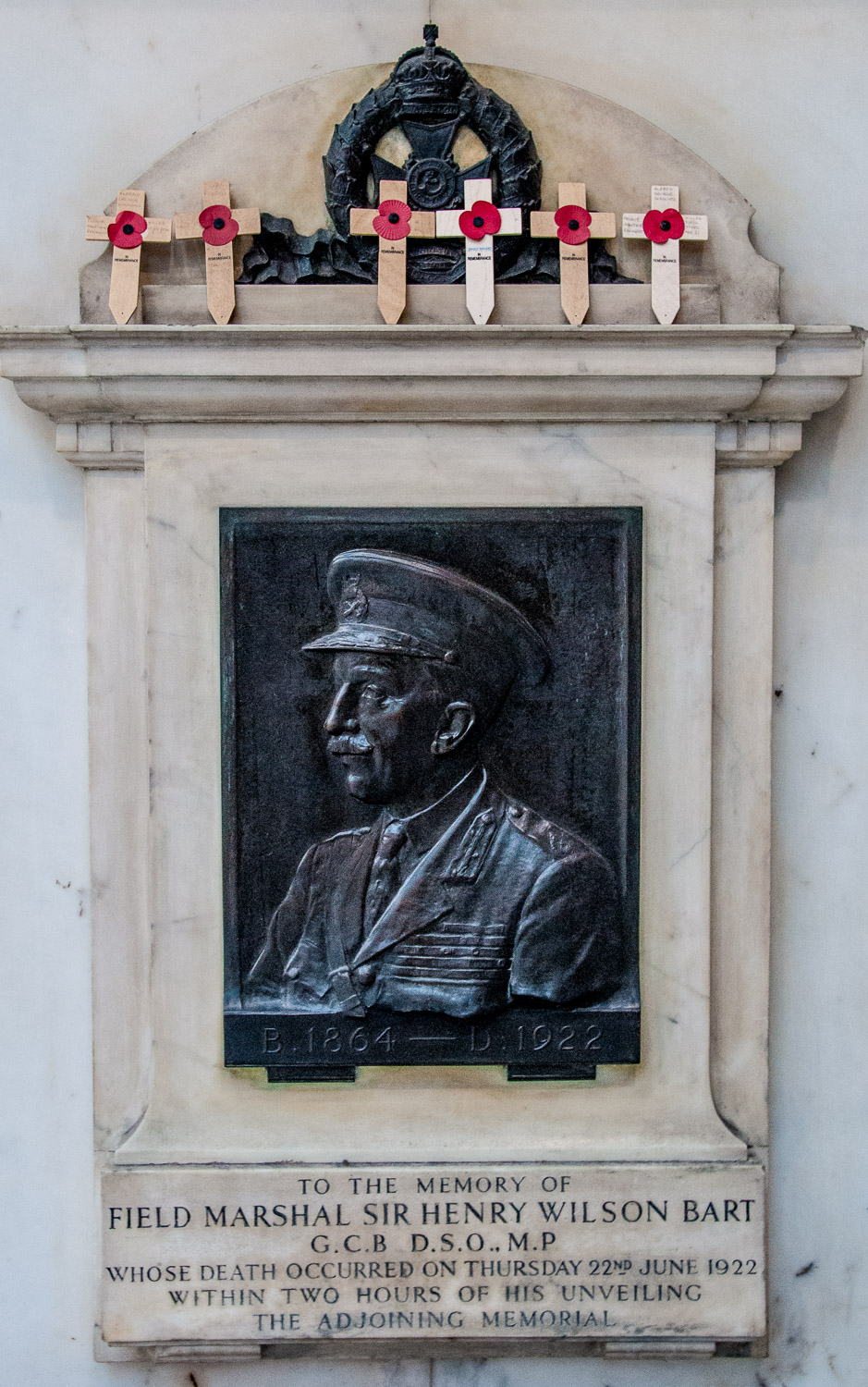
Answers to the Quiz:
- The statue is made of bronze from captured enemy cannon melted down after the Battle of Waterloo. You can read more here.
- The story goes that when he was a young apprentice, and rather poor, he missed an important meeting with his master on London Bridge because he had no way of telling the time. He vowed that, if ever he became rich, he would erect a clock in the vicinity and this magnificent example of the clockmakers’ art was the result. Read more here.
- It’s by Damien Hirst. Read more about my visit to the church here.
- The Museum of London.
- He is commemorated on the Watts Memorial in Postman’s Park. Read about him and three other brave policemen here.
- It’s the only Catholic church in the City of London. You can read more about its history here.
- When Christchurch was a blazing inferno as a result of the Blitz a postman ran into the building and rescued the font cover. Read more about this and other rescued artifacts here.
- It’s a woman dressed as a man, by Giuseppe Grandi, and dates from 1872. The shop owner, George Attenborough, had a niche created specially for it over the front door. Kaled is the page of Count Lara in Bryon’s poetic story of a nobleman who returns to his ancestral lands to restore justice. He antagonises the neighbouring chieftains who attack and kill him. Kaled stays with his master and lover to the end, when it is revealed he is in fact a woman. (Spoiler alert) She goes mad from grief and dies.
- It comes from a lamp standard on Holborn Viaduct. Read more about it here.
- 2014, when the staircase to the north east pavilion of Holborn Viaduct was rebuilt in Victorian style. Read more about the history of the viaduct and its statues here.
- It is situated on the south side of St Paul’s Cathedral.
- The church is St Olave Hart Street and the famous civil servant and diarist Samuel Pepys. Read more about him and the terrible plague of 1665 here.
- The Greek words are a palindrome copied from the Cathedral of St Sophia in Constantinople. Read more about unusual church artifacts here.
- Here is the inscription again and the answer to the maths:
Here Robert Balthrope Lyes intombed,
to Elizabeth Our Queene
Who Sergeant of the Surgeons Sworne,
Neere Thirtye Yeeres Hathe Beene
He Died at Sixtye Nine of Yeeres,
Decembers Ninthe The Daye
The Yeere of Grace Eight Hundred Twice
Deductinge Nine A waye.
Let Here His Rotten Bones Repose
Till Angells Trompet Sounde
To Warne The Worlde of Present Chaunge
And Raise the Deade From Grounde.
He died in 1591, but the poet who devised this eulogy presumably had a problem getting 1591 to rhyme with anything. So he chose the frankly odd solution of asking the reader to do some mental arithmetic – ‘The Yeere of Grace Eight Hundred Twice’ (i.e. 800 x 2 = 1600) Deductinge Nine A waye (1600 – 9 = 1591).
15. The famous cat, Hodge, is remembered by this attractive bronze by John Bickley which was unveiled by the Lord Mayor, no less, in 1997. Hodge belonged to Dr Johnson, who lived for a while in the house opposite. Hodge sits atop a copy Johnson’s famous dictionary and alongside a pair of empty oyster shells. Read more here.
16. Unilever house at Blackfriars. You can read more here.
17. It was Newgate Gaol. Read more about it here along with its connection to St Sepulchre’s church including the bell that was rung outside the cells of condemned prisoners the night before their execution.
18. It is the Kindertransport commemorative statue. In 1938 and 1939, nearly ten thousand unaccompanied Jewish children were transported to Britain to escape persecution in their hometowns in Germany, Czechoslovakia and Austria. These children arrived at Liverpool Street station to be taken in by British families and foster homes. Often they were the only members of their families to survive the Holocaust.
19. Austin Friars (off Old Broad street), once the location of an Augustinian Friary. Read more here.
20 Wilson was assassinated outside his house in Eaton Place at about 2:20 pm. Still in full uniform, he was shot six times, two bullets in the chest proving fatal. The two perpetrators, IRA volunteers Reginald Dunne and Joseph O’Sullivan, shot two police officers and a chauffeur as they attempted to escape but were surrounded by a hostile crowd and arrested after a struggle. Interestingly both were former British army officers and O’Sullivan had lost a leg at Ypres, his subsequent disability hindering their escape. After a trial lasting just three hours they were convicted of murder and hanged at Wandsworth gaol on 10 August that year – justice was certainly delivered swiftly in those days. No organisation claimed responsibility for Wilson’s murder. Read more and view other interesting memorials here.
If you would like to follow me on Instagram here is the link …
